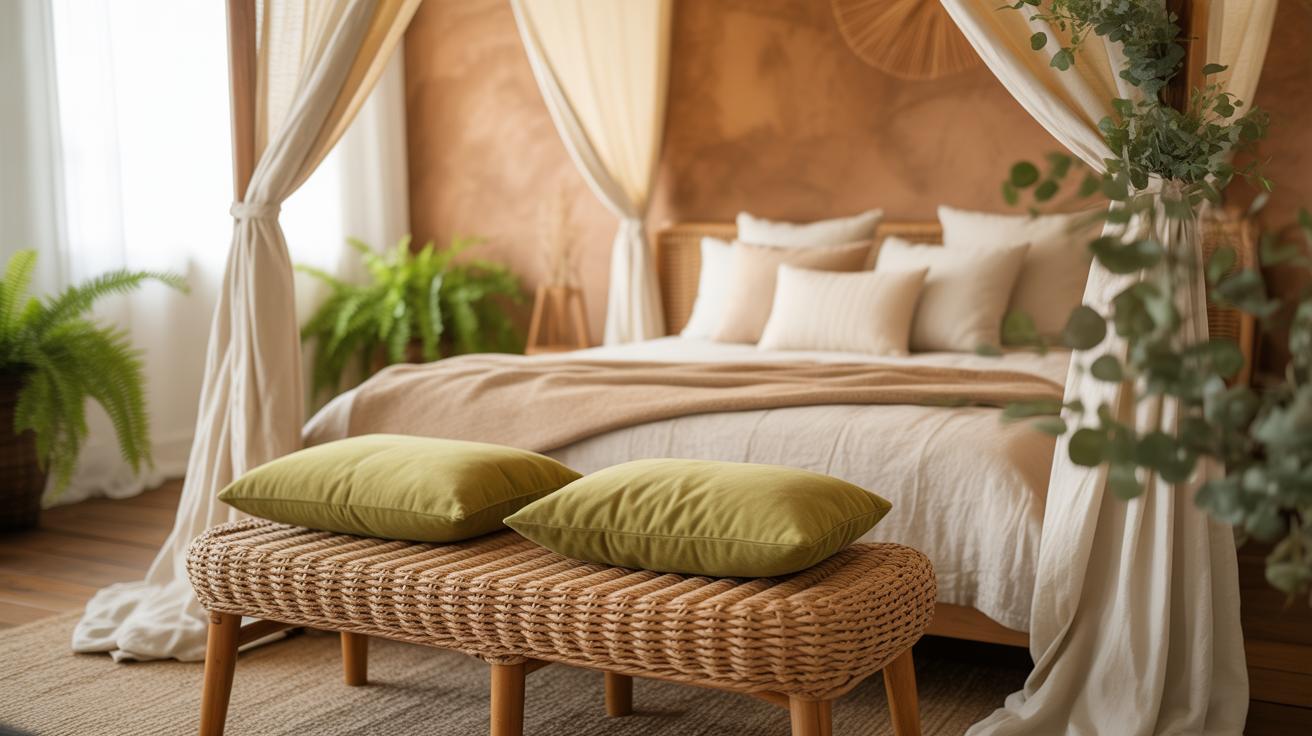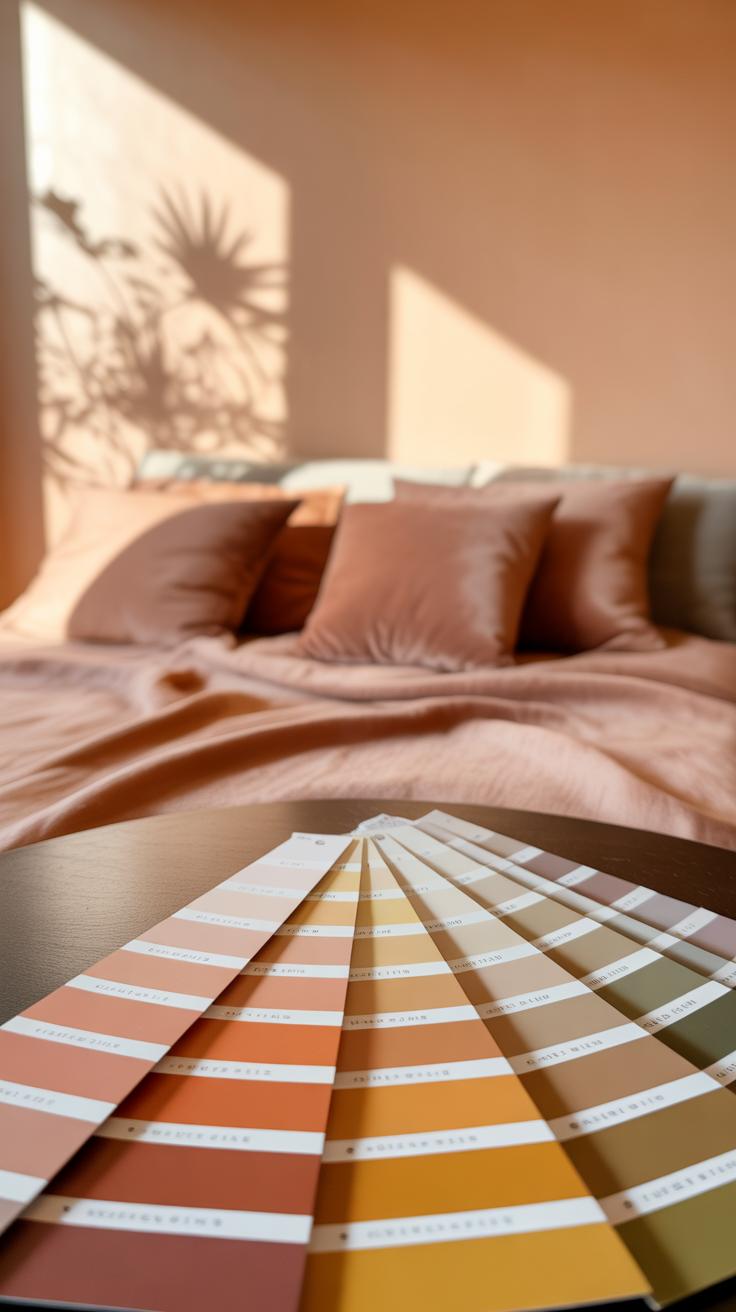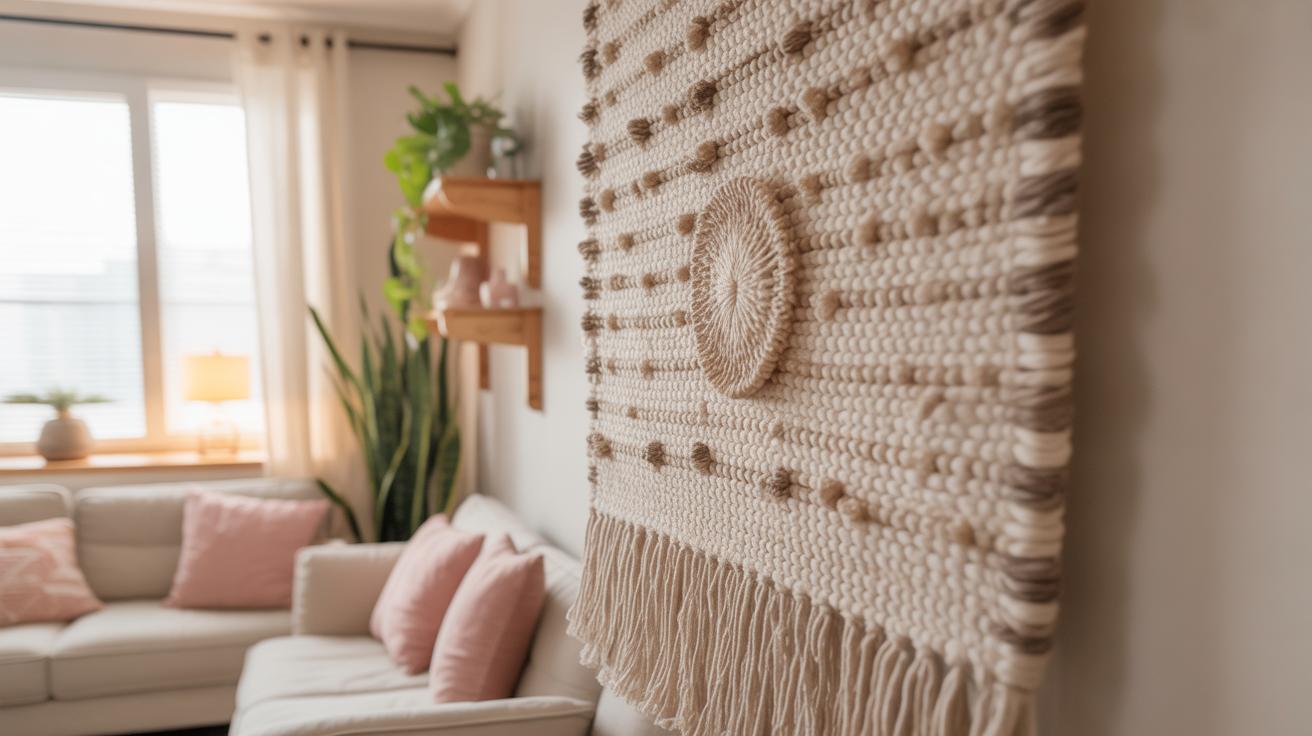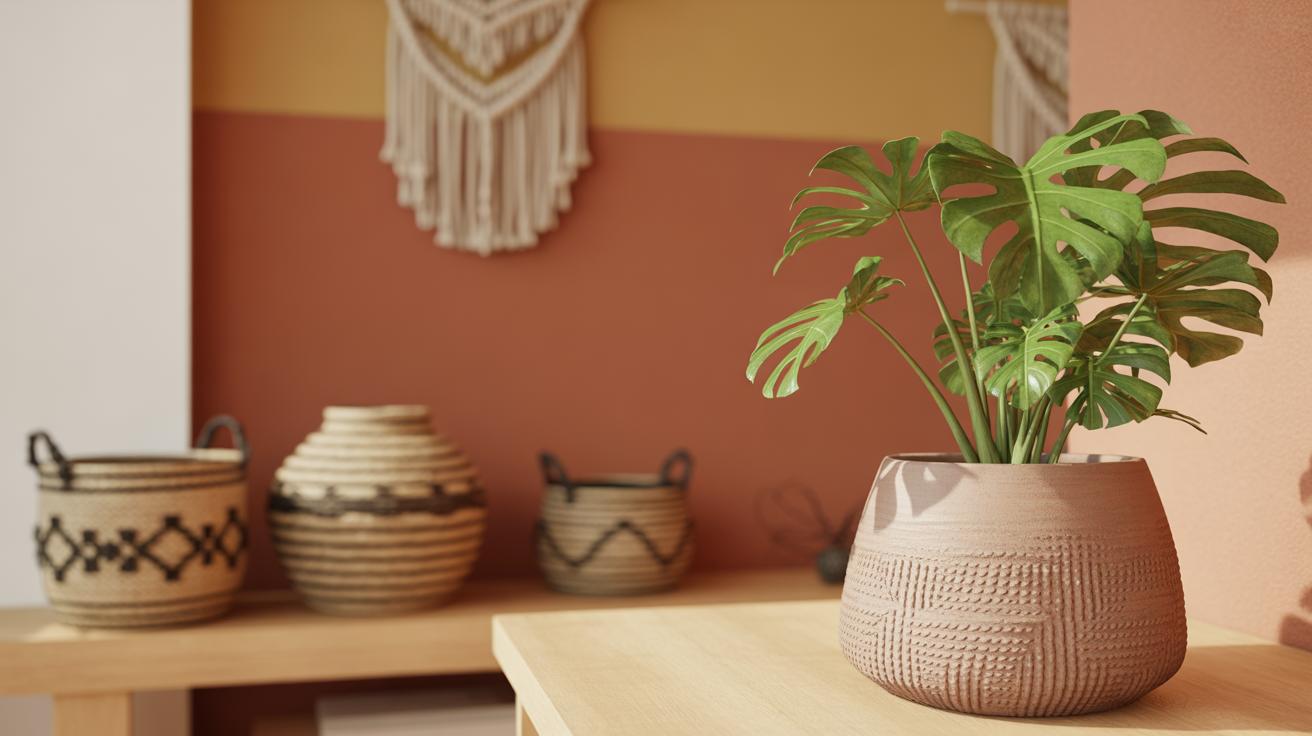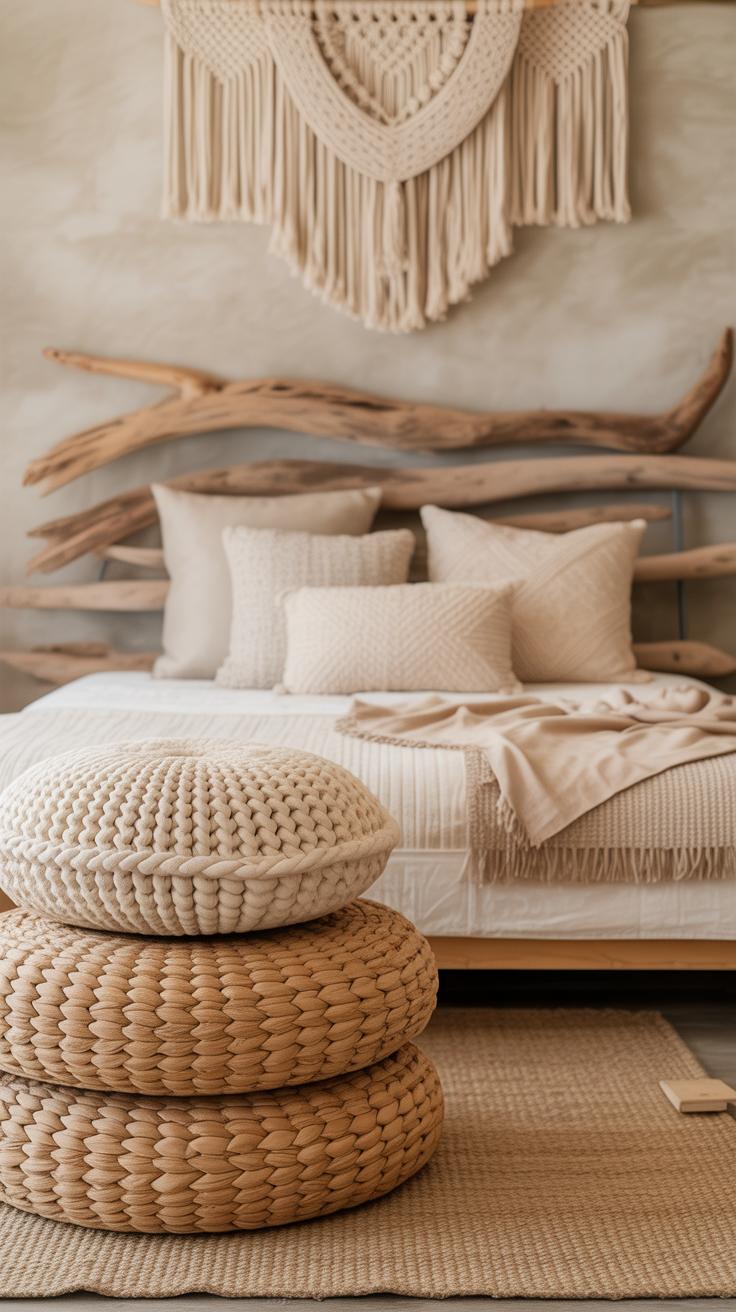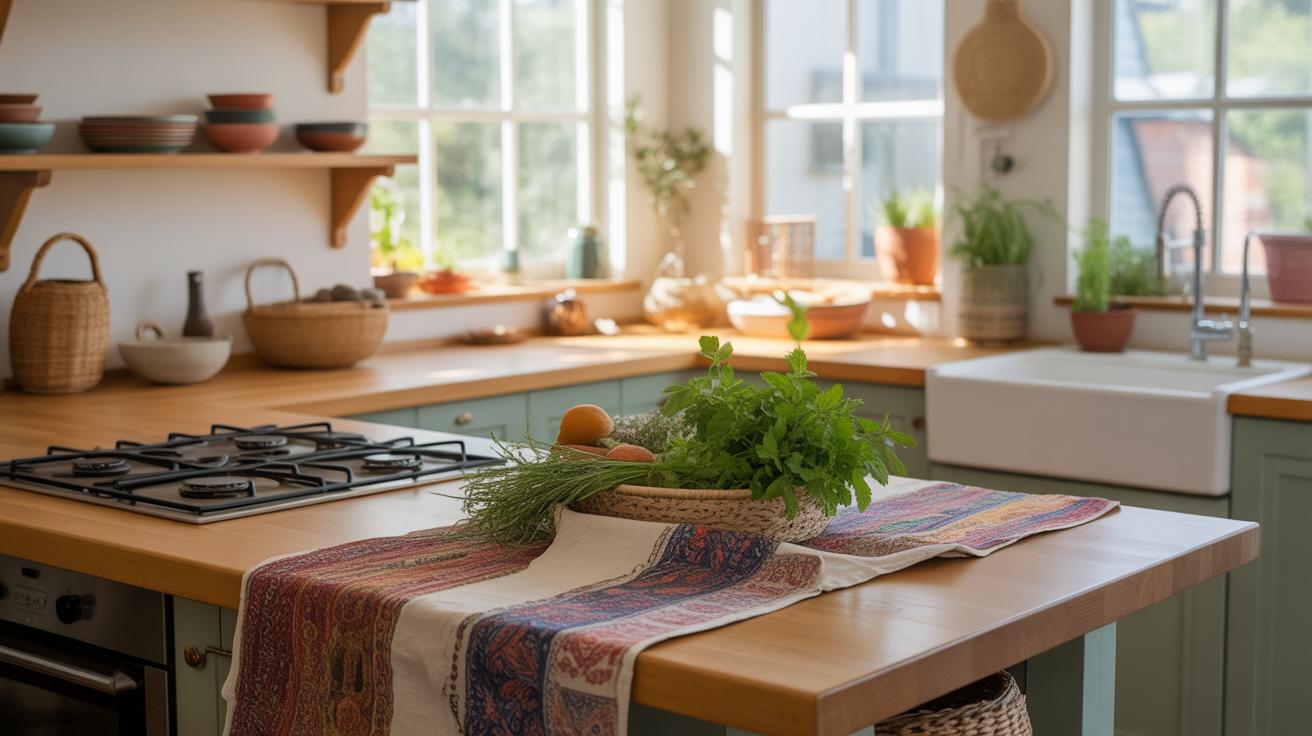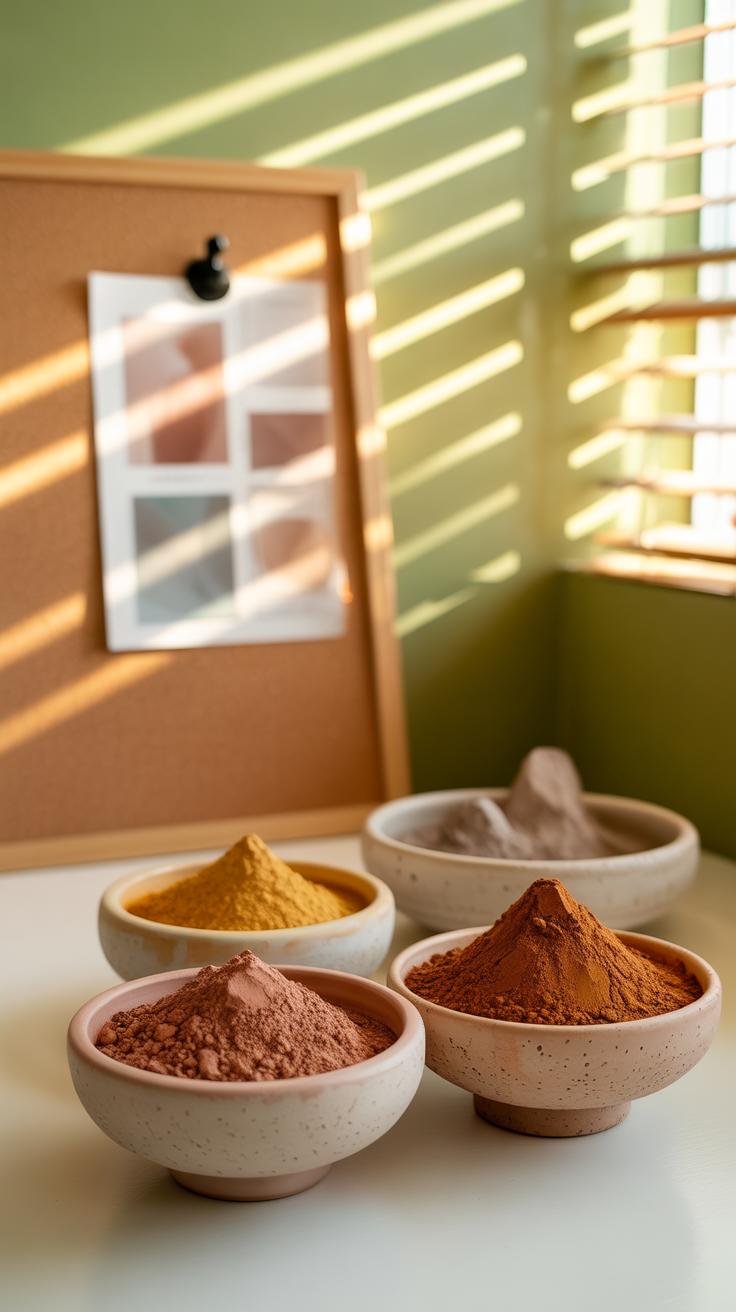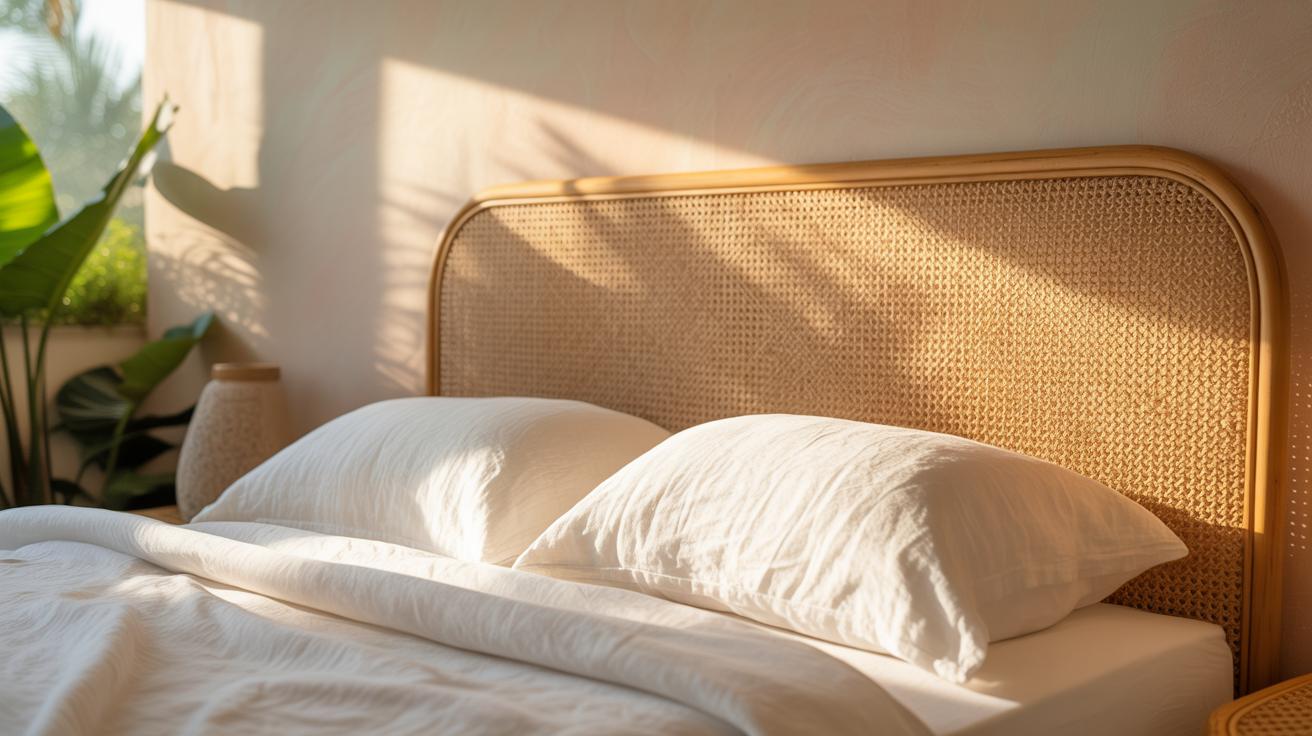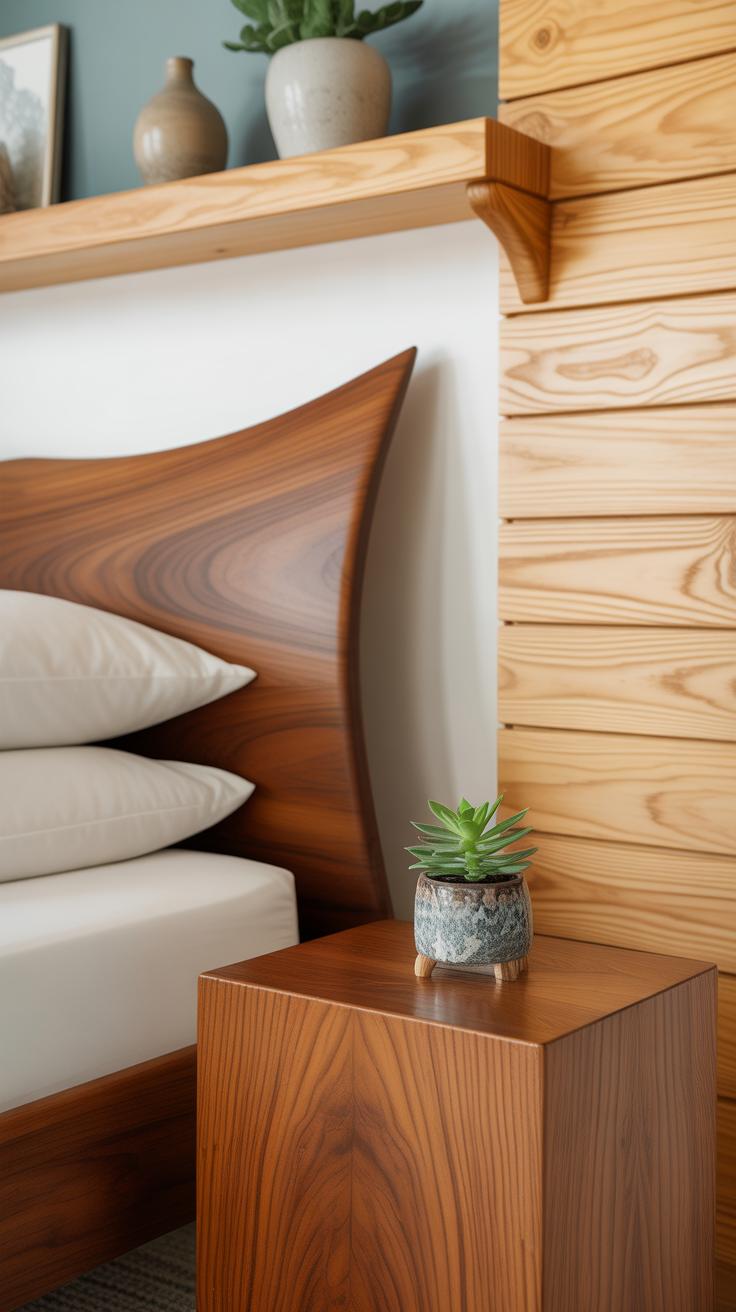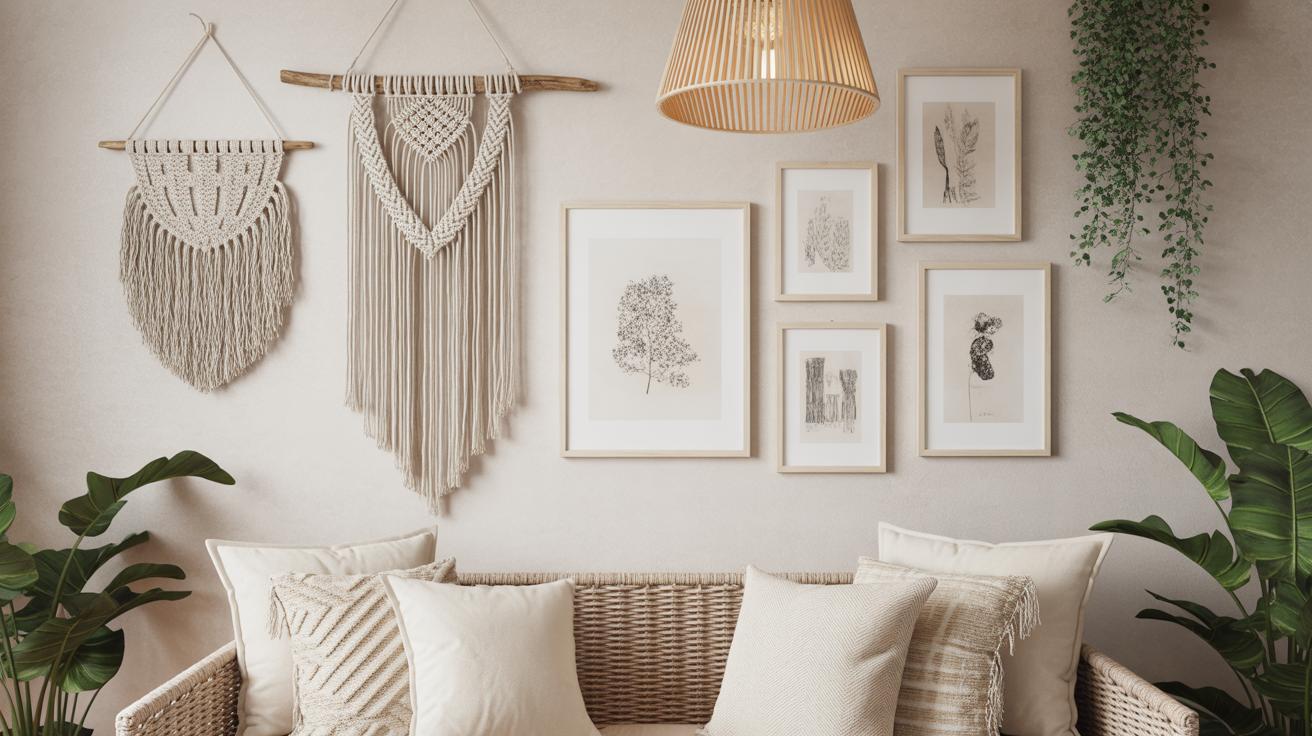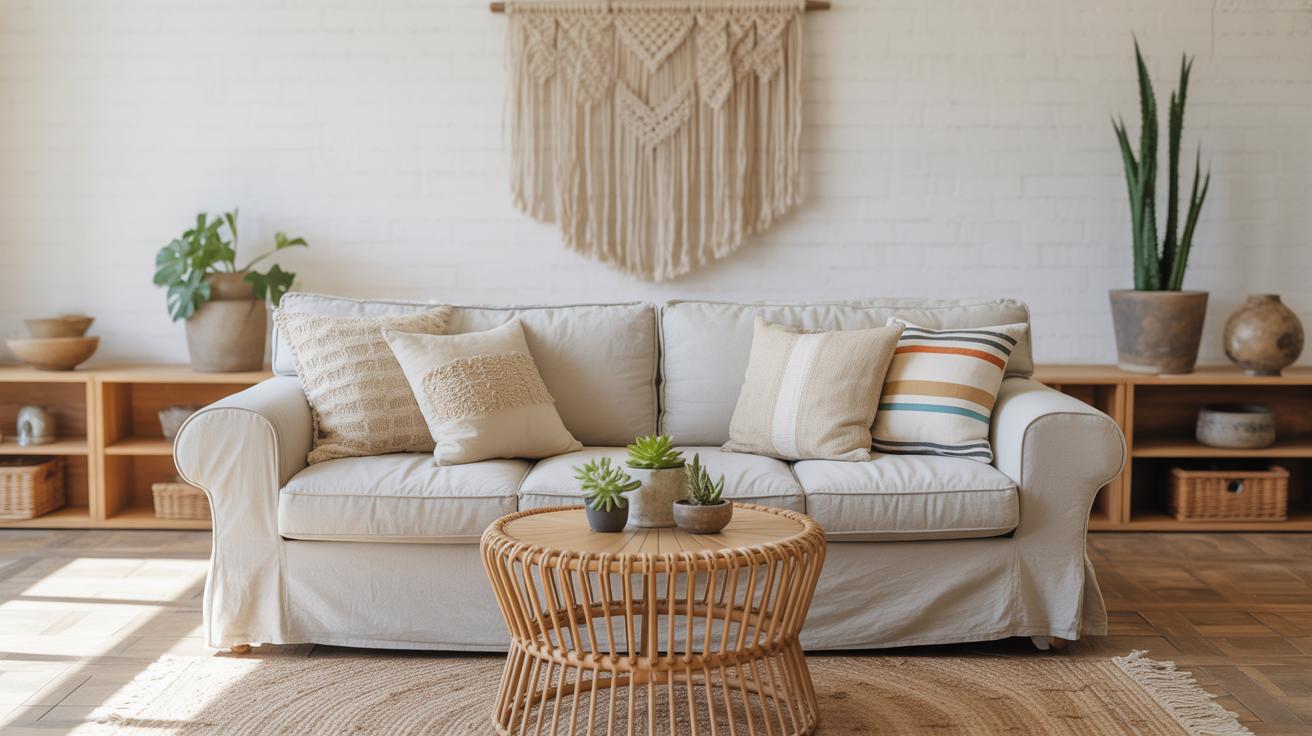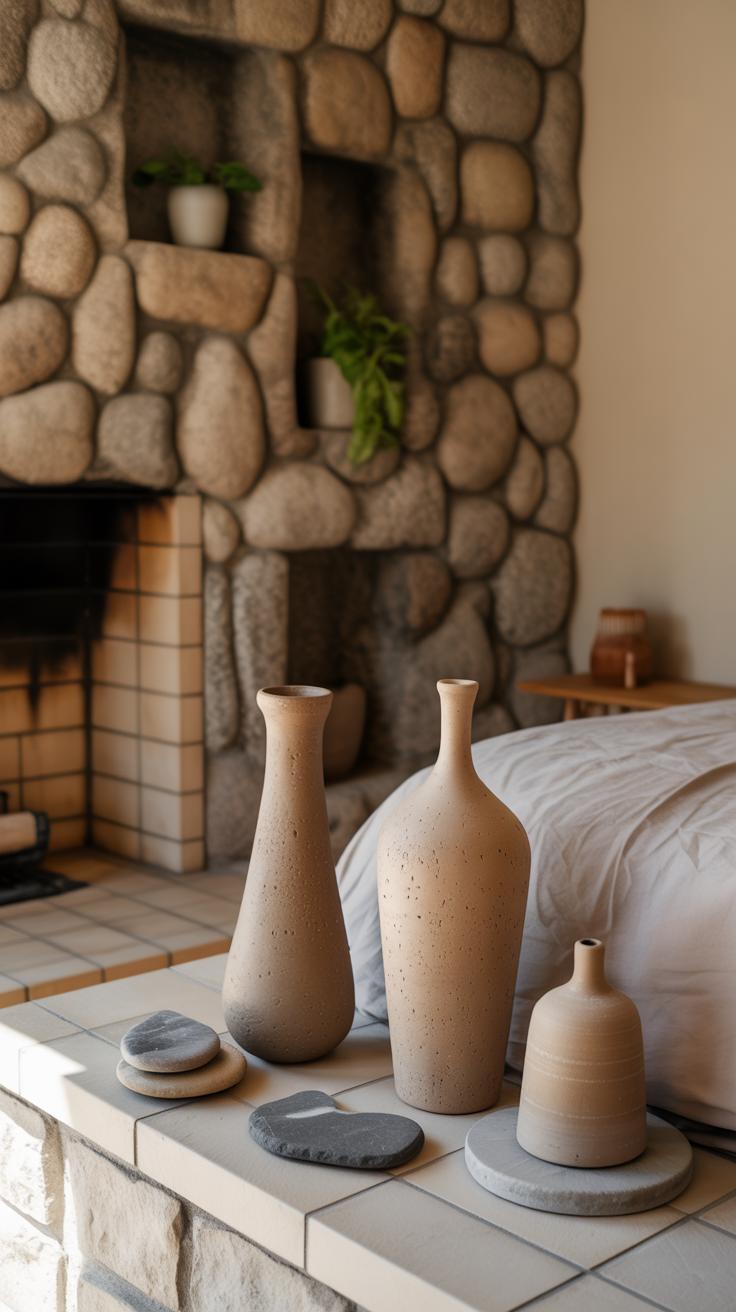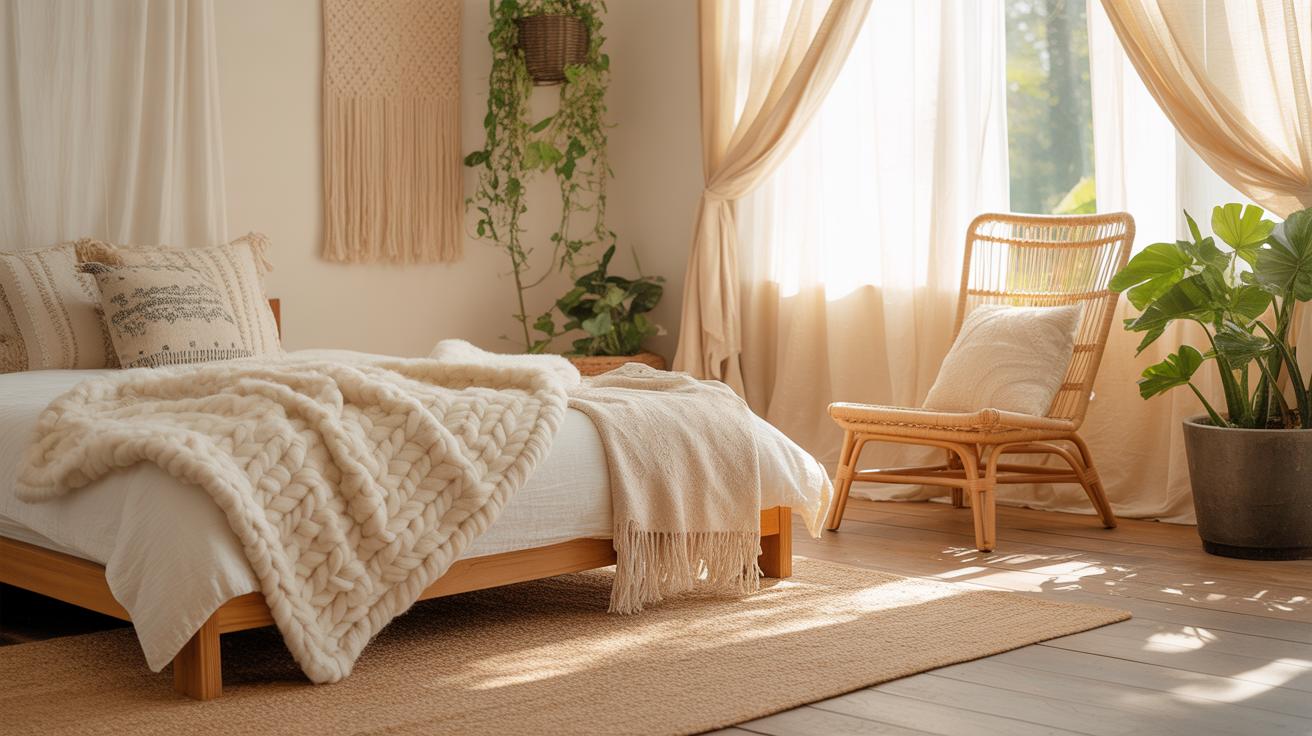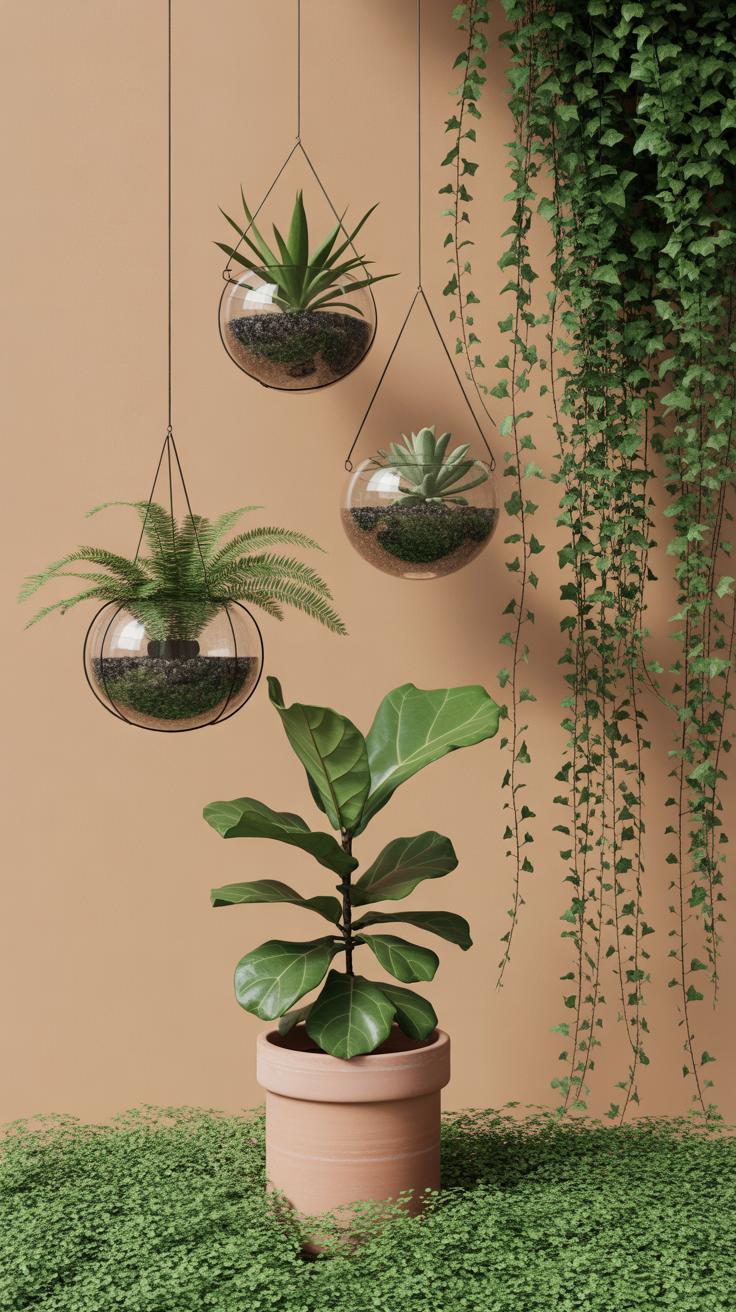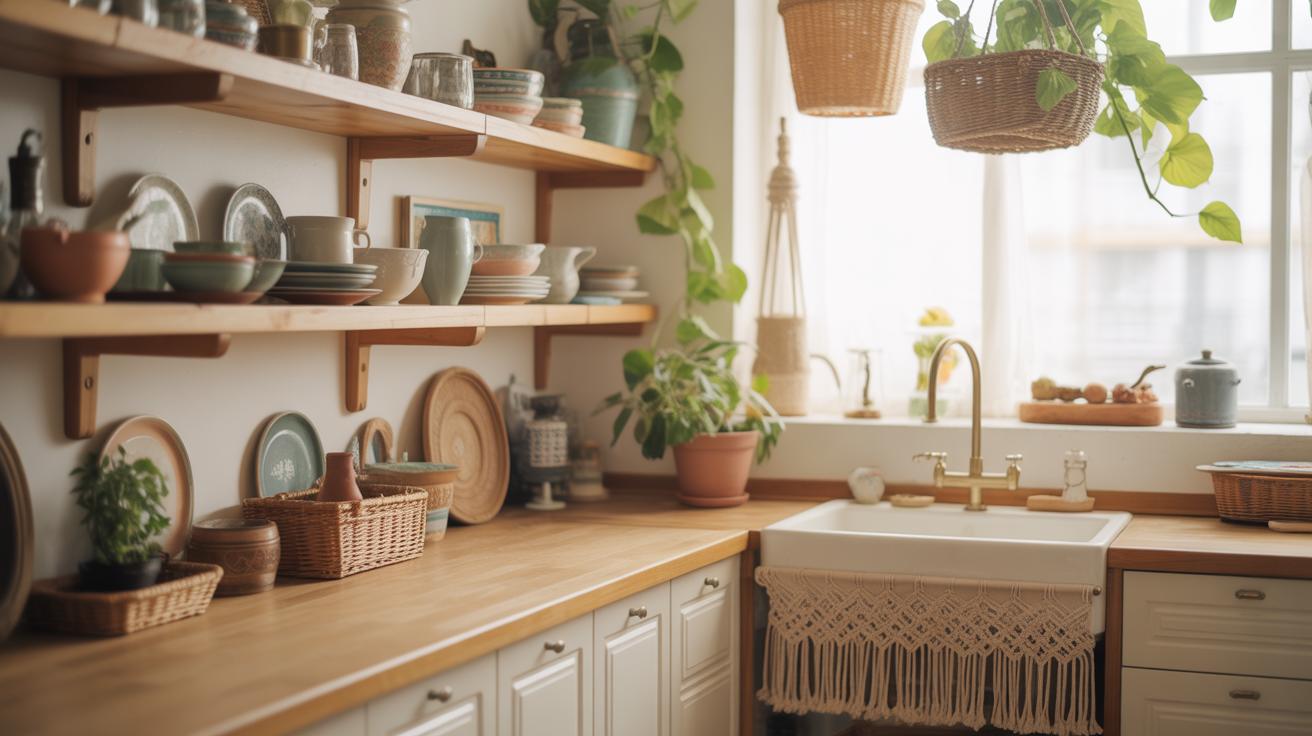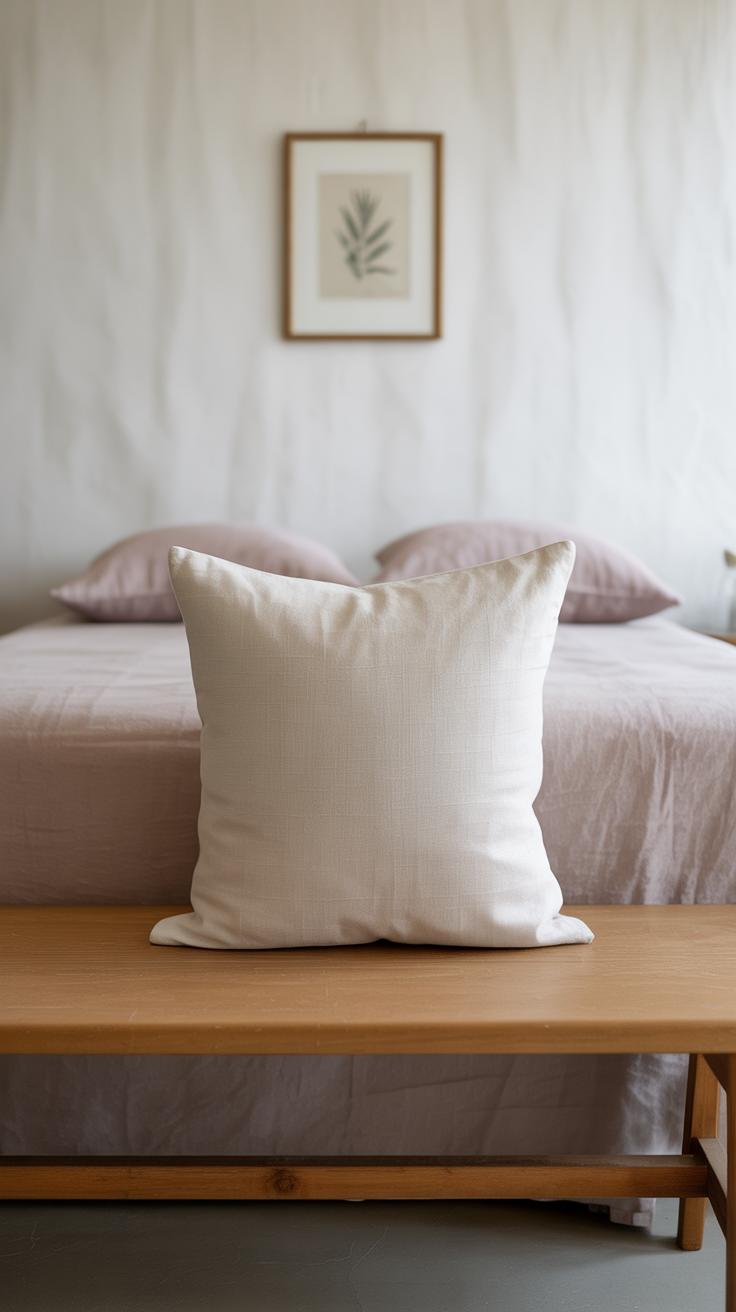Introduction
You want your bedroom to be calm and welcoming. Creating an earthy bedroom oasis with natural textures can help you do that. Earth tones are colors inspired by nature, like browns, greens, and grays. These colors make a room feel warm and peaceful.
In this article, you will learn why an earthy bedroom is good for your rest. We’ll explore easy ways to add natural textures and colors to your space. You will discover tips to make your bedroom a calm place to relax and sleep well.
Understanding Earth Tones For Your Bedroom
What Are Earth Tones
Earth tones are colors drawn straight from the natural world around us. Think of the soft browns of tree bark, the sandy hues of riverbeds, or the muted greens of moss and leaves. These tones aren’t flashy or bright; they feel grounded and subdued, almost as if they come from the very soil beneath our feet.
Some common earth tones include:
- Brown – from rich chocolate to light tan, imitating wood and earth.
- Beige – warm, creamy shades reminiscent of sand or dry grass.
- Green – soft, dusty greens like olive or sage, reflecting foliage and nature’s plant life.
- Terracotta and rust – colors pulled from clay and minerals.
These hues often appear in natural materials and settings, making them familiar and comforting without being overwhelming.
Effects Of Earth Tones In A Room
There’s something about earth tones that can quietly change how we feel in a room. They tend to ground a space, giving it a peaceful, calming atmosphere. When you walk into a bedroom dressed in these shades, you might feel an unexpected sense of warmth and safety.
They don’t shout for attention, which means your mind can relax rather than race. It’s why many people find such colors help with sleep—or at least winding down at the end of the day.
In my own experience, a simple beige wall paired with wooden furniture made my bedroom feel cozy without feeling small or closed in. On days when stress hit hard, the muted greens and browns around me provided a kind of visual balm. But, of course, what feels calm to one person might seem dull or lifeless to another. So it’s fine to test and see what works for you.
Choosing earth tones gives your room a timeless quality—it’s almost like you’re borrowing a bit of nature’s calm, right inside your own space. Isn’t that worth exploring?
Choosing Natural Textures For Comfort
Natural textures bring a sense of warmth and depth to your bedroom that synthetic materials rarely capture. Think about wood, cotton, wool, and stone—they each offer something unique to your space. Wood, with its grain and knots, can turn furniture into quiet focal points. It feels grounded, sturdy, and somehow familiar. Cotton, especially when it’s unbleached or lightly washed, creates soft and breathable bedding that invites rest without fuss.
Wool, surprisingly versatile, adds a cozy layer—whether as a blanket or rug—that feels substantial, yet gentle. Stone, often overlooked, works well in details like lamps, planters, or small accent pieces. Its naturally cool touch contrasts nicely with warmer textures, offering balance without overcrowding. Using these materials thoughtfully can make your bedroom feel like a retreat that’s both calming and tactile.
Common Natural Materials In Bedrooms
Here are some natural materials to consider, along with their character:
- Wood: Used for beds, shelves, and nightstands. It varies from smooth, polished finishes to rougher, more rustic looks. Wood adds a visual ‘weight’ that anchors the space, and its texture can range from sleek to slightly rugged.
- Cotton: Ideal for sheets, pillowcases, and curtains. It’s soft, breathable, and easy to wash, offering comfort without fuss. You might prefer organic or stonewashed cotton for a more lived-in feel.
- Wool: Great for throws, rugs, or cushions. It’s thicker and warmer, often with a slightly nubby surface that adds tactile interest. Wool brings a sense of layered comfort, especially in cooler months.
- Stone: Commonly used for decorative accents like vases, lamps, or small trays. Its hard, cool surface contrasts gently with softer textiles, giving a grounding, elemental touch.
How Textures Affect Bedroom Mood
Textures shape how a room feels—not just visually but physically. Natural textures invite you to touch and linger. They add layers that prevent a bedroom from feeling sterile or one-dimensional. But there’s a balance to strike. Too many textures can overwhelm; too few may leave things cold or flat.
When I first furnished my own space, I found that mixing wood furniture with cotton bedding and a wool throw created a rhythm I hadn’t expected. It wasn’t just about comfort; it was about making the room interesting in a quiet way. Each texture played off the others without shouting. Your bedroom can feel like that too—inviting, calming, and subtly textured.
Selecting Earthy Color Palettes
Picking the right earthy colors for your bedroom can feel tricky, but it’s helpful to think about warm and muted tones working together rather than competing. Imagine soft browns, gentle beiges, or dusty terracottas paired with calmer shades like sage green or slate gray. That mix tends to strike a balance between coziness and calmness.
When building your color scheme, start with a neutral base—like warm taupe or creamy off-white—and layer in your earthy choices. For example:
- Combine a light sand color on the walls with olive-green accents in pillows or throws.
- Pair a rich chocolate brown bed frame with pale, calming beige bedding.
- Mingle soft mossy greens with muted clay tones for a subtle contrast.
It’s not about perfect matches but thoughtful combinations that complement each other without overwhelming. Sometimes adding just a hint of color in an unexpected spot can make the whole room feel grounded.
From what I’ve gathered, earthy tones can actually help lower stress. Colors that echo nature seem to slow down the mind. Have you noticed how a forest path or a quiet beach feels restful? That same effect happens in your bedroom when you choose calm, natural shades. These colors subtly encourage relaxation, helping your brain unwind before sleep. So, while the palette might seem simple, its impact goes deeper—you’re creating a space that invites genuine comfort and calm, not just a pretty look.
Incorporating Wooden Furniture And Elements
Wooden furniture gives a bedroom a grounded feeling, making the space feel connected to nature in a subtle way. Think about a bed frame or a dresser in wood—they carry a texture and warmth that other materials just can’t match. But choosing wood isn’t as straightforward as just picking what looks nice. The type of wood you bring in can shift the bedroom’s whole vibe.
Choosing The Right Wood
Light woods like pine or birch brighten the room, offering an airy, open mood. They often suit smaller spaces because they reflect light and don’t feel heavy. On the other hand, darker woods like walnut or mahogany bring depth and richness, sometimes making the room feel more enclosed—or cozy, depending on your perspective.
What’s tricky is how your choice influences your bedroom’s energy. A walnut nightstand might add sophistication but could also weigh down a pale, soft color scheme. So, balance is key. You probably want to mix woods carefully, not let one overpower the others unintentionally.
Wood Texture Benefits
Wood isn’t just about color—it’s about texture and presence. Its grain patterns bring in slight variations that break monotony and introduce visual interest. Plus, wood feels sturdy and reliable; that sense of permanence works well in a room meant for rest. But mixing different wood grains can be a challenge.
A simple way to avoid clutter is to vary scale: pair a finely grained side table with a coarser, more textured bedframe. Also, consider leaving some wood pieces untreated or lightly finished to emphasize natural roughness while keeping others smooth. The contrast keeps things lively but not chaotic. You might even find that certain imperfections in wood—knots, subtle cracks—give personality rather than detract.
Have you noticed that wooden furniture ages but still feels timeless? That tension between new and weathered adds a unique layer to your bedroom’s calm, almost like a quiet story told through natural materials.
Adding Natural Fabric Bedding And Curtains
When it comes to creating an earthy bedroom, picking bedding and curtains made from natural fibers can make a noticeable difference. Fabrics like cotton, linen, or wool bring a subtle texture and a kind of grounded softness that synthetic materials rarely achieve. You might find yourself running your hands over the linen sheets, appreciating how breathable they are, especially during warmer months. There’s something calming about sleeping under materials that feel close to nature.
Choosing Natural Bedding
Look for qualities such as breathability and softness when selecting natural bedding. Cotton is a classic choice—light and airy, it helps regulate temperature well. Linen, often a bit rough at first, softens with each wash and adds a lived-in charm that feels honest. Wool blankets or throws offer warmth without overheating, making them great for cooler nights.
Eco-friendliness is another factor worth considering, especially if you want your bedroom to reflect a conscientious lifestyle. Organic cotton or sustainably sourced wool not only feel good but come with less environmental baggage. Does choosing natural fibers always mean you’ll get durability? Maybe not always, but I think the comfort compensates for that.
Natural Curtains And Window Treatments
Natural curtains soften daylight filtering into your room, creating a warm, quiet atmosphere. Fabrics like lightweight linen or cotton voile allow sunlight to diffuse gently. You might prefer earthy tones—muted ochres, soft browns, or faded greens—that blend with the rest of your décor. These colors rarely demand attention but quietly build the room’s mood.
Textured curtains add another tactile layer, breaking up flat surfaces and enriching your space without fuss. Sometimes, I wonder if the choice of window treatments affects our mornings more than we expect—natural fabrics coax you into waking gently, easing you out of sleep rather than startling you awake.
Using Stone And Clay Accents For A Grounded Feel
Stone and clay pieces offer a solid, tactile presence that immediately anchors a bedroom. They bring an earthiness you can almost feel—the roughness of stone, the subtle warmth of clay. When you add these materials, the room stops feeling too fragile or overly polished. It’s like they remind you, maybe quietly, of the ground beneath your feet.
Types Of Stone And Clay Decor
Think about using stone planters with moss or succulents, their muted grays and speckled textures giving a quiet contrast to soft bedding. Clay vases come in terracotta reds, soft beige, or faded gray—each piece unique with small imperfections in glaze or shape that add character.
Wall art carved or molded from these materials can introduce depth without screaming for attention. Other options include candle holders and small bowls, heavy yet simple. The focus is on nature’s raw edges, not flawless finishes.
Benefits Of Adding These Elements
These natural components connect your space back to something primal, earthy—something steady. They don’t overwhelm, but they do provide points of interest that pull your eye gently around the room. Their rough textures contrast with smooth fabrics or painted walls, creating balance.
Using stone and clay feels grounding in a subtle way. It can calm a restless mind trying to unwind, perhaps because these materials remind us, on a subconscious level, of places untouched and real. Yet, they never distract from rest—they just settle the space like a quiet breath.
Bringing Greenery And Plant Life Indoors
Plants add more than just a pop of green—they bring texture that feels alive and fresh to an earthy bedroom. The natural shapes and varied leaves contrast nicely with stone or clay accents you might already have, creating a layered, tactile environment. Sometimes, the simplest addition of a leafy corner can shift the vibe of the whole room from flat to inviting.
Choosing plants for bedrooms can feel tricky if you don’t want high maintenance, but some species really thrive indoors with minimal fuss. For instance:
- Snake plants: They tolerate low light and dry air pretty well, and they actually help filter toxins, which is a bonus for your sleeping space.
- Pothos: Their trailing leaves soften shelves or windowsills and don’t demand much beyond occasional watering.
- ZZ plants: They can survive in low light and need watering just once in a while, making them almost impossible to kill.
Visually, plants can reduce stress and help your mind settle. Their presence reminds us of nature and slow time, qualities that fit well in a room meant for rest. Air quality tends to improve too, with some studies suggesting plants can reduce pollutants during the night. Placing them near your bed, or on bedside tables, can quietly boost the calm feeling. Just keep in mind where they get light—too dark or cramped spots might do more harm than good.
Have you ever noticed how a room with a few well-placed plants can feel oddly more alive yet soothing? That subtle shift might be why adding natural greenery deserves attention when you’re building your earthy retreat.
Maintaining Balance And Simplicity In Design
When working with earth tones and natural textures, it’s easy to want to layer everything at once—wood, linen, woven baskets, stone accents. But too much can overwhelm the calm you’re trying to create. I’ve found that keeping things simple really helps the space breathe.
Try to be selective with your decor. Maybe pick one or two key textured pieces—a chunky knit throw or a rattan chair—and keep other elements smoother and more minimal. Limiting color variations to a few shades of brown, beige, or muted greens avoids visual clutter and helps you feel grounded.
Think about how textures and colors interact. Rough wood pairs nicely with soft cotton, but if you add a third texture like jute or leather, keep it subtle—perhaps just a small rug or pillow. Mixing too many different natural elements can make the room feel busy rather than restful.
Keeping a consistent natural theme really pulls everything together. When all pieces feel like they belong to the same earthy story, there’s less mental effort to make sense of the space. You end up with a bedroom that feels calm, clear, and inviting, even if it’s small or full of personality. What’s your approach when things start to feel too crowded or chaotic in your space?
Conclusions
Now you know how to create an earthy bedroom with natural colors and textures. Using earth tones like brown and green can help your bedroom feel calm and warm. Natural materials like wood and cotton add comfort and beauty.
Think about your room and what textures and colors you can add. Small changes like new pillows or wooden decorations will make a big difference. Your bedroom can become your peaceful place to rest and feel good every day.

